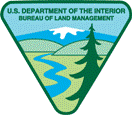United States Department of the Interior

United States Bureau of Land Management: Staff Publications
Date of this Version
8-1979
Citation
TECHNICAL NOTE U.S. DEPARTMENT OF THE INTERIOR - BUREAU OF LAND MANAGEMENT, U.S. Department of the Interior Denver, Colorado
Abstract
The purpose of this Mule Deer (Odocoileus hemionus) Habitat Management Guide is principally to assist BLM managers and biologists in planning for and managing mule deer habitat on public lands administered by the Bureau of Land Management. For many years Federal land management agencies have made the distinction between the Federal responsibility for managing habitat and the State prerogatives of managing native wild ungulate populations. Certainly the two are inseparably linked. These responsibilities, and up to now "symbiotic relationships", are probably best described succinctly in Title 43 of the Code of Federal Regulations Part 24.
Outlook -- The mule deer is well adapted to semiarid western lands. Although from time to time the white-tailed deer (Odoaoileus virginianus) appears to be increasing in importance on some mule deer ranges, this smaller more secretive deer will probably never replace the mule deer as the West's most important big game animal. The small size of the mule deer's home range and its ability, at least in small herds, to tolerate to some extent human beings and their facilities will probably assure its continued importance as a big game animal in the western United States when other species have become scarce, endangered, or extirpated. The present accelerated "development" of the West makes it imperative that biologists manage mule deer habitat if any significant herds are to remain after much important historic habitat has been lost.
Included in
Animal Sciences Commons, Natural Resources and Conservation Commons, Natural Resources Management and Policy Commons


Comments
U.S. government work